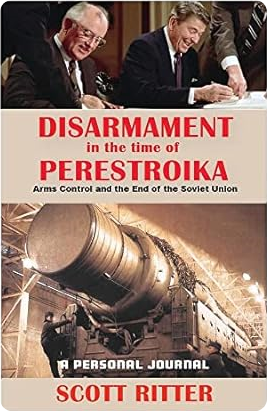
Ukraine’s spring offensive a likely death trap for US, NATO
Keep up to Date & Bypass the Big Tech Censorship
Get uncensored news and updates, subscribe to our daily FREE newsletter!
Under US guidance, Ukraine is planning a major counteroffensive likely later this Spring when the fields and secondary roads that are not asphalted dry out. Right now most military vehicles cannot operate over open fields and have real difficulty on unpaved secondary roads.
According to leaked alleged Pentagon documents, Ukraine has assembled twelve brigades for the planned military push.
Nine of the twelve brigades are equipped with US and European armor and artillery and the three others are made up of older Russian-origin equipment, some of it modified by Ukraine.
| Recommended Books [ see all ] | ||||
|---|---|---|---|---|
 |  |  |  |
 |
According to the leaked documents, Ukraine can expect big gains from its offensive. But it would seem the reality is quite different. Even the Wall Street Journal, a Ukraine booster, has doubts.
Indeed, the documents themselves tell a different story, which helps explain the mad dash by the Biden administration to try and stop the dissemination of the leaked documents.
The planned Ukrainian late Spring offensive could be a death trap for the US, NATO and even America’s Asian allies.
A brigade is normally between 3,000 and 5,000 soldiers. Using the higher number, Ukraine is planning to commit 60,000 troops in the counteroffensive, focused on an effort to break Russia’s control over Black Sea ports other than Sevastopol.
However, it is likely Ukraine will launch some sort of simultaneous attack on Crimea and Sevastopol, if it can.
The offensive is largely the brainchild of US Under Secretary of State for Political Affairs Victoria Nuland. She is the éminence grise in the Biden administration when it comes to Ukraine.
Nuland has not made any secret of her ambition for Ukraine to take back Crimea. Nuland, who is rigidly anti-Russian and anti-Putin, would like to see the Putin government collapse: achieving that in her view requires an absolute victory by Ukraine over Russia, meaning that Ukraine will retake every square meter of its lost land. Ukrainian President Volodymyr Zelensky agrees.

Nuland has a long history with Ukraine. In the Obama administration, she supported the Maidan protestors and the overthrow of the legally elected, but pro-Russia, government of Ukraine.
There are secret recordings of her conversations with the US ambassador to Ukraine at the time, deciding who would be best to replace Viktor Yanukovych, who was then president of Ukraine. Yanukovych was elected in 2010 in a runoff between himself and Prime Minister Yulia Tymoshenko. Yanukovych originally came from Donetsk; he is now in exile in Russia.
The US backed the coup in Ukraine, even though it was illegal and undemocratic. Since then most of the Russian-speaking parts of Ukraine have not participated in Ukrainian elections, including Zelensky’s election in 2019.
Now, after Russian annexations, participation is foreclosed as the Donbas region “republics” in eastern Ukraine (Donetsk and Luhansk, Kherson, Zaporizhzhia and Crimea now are, in the view of the Russian government, part of Russia.
The planned counteroffensive, despite US and NATO support, faces some significant obstacles. The nine US-NATO-equipped brigades have less armor than promised by NATO.
Below is what these Ukrainian brigades look like, according to the Pentagon papers and as explained by Simplicius on his Substack blog:
116th Brigade:
90 x BMP (Polish/Czech), already delivered.
13 x T-64 (Ukrainian), on hand.
17 x Unspecified tanks, TBD.
12 x AS-90 (British 155mm howitzer), April delivery. —these are 155mm howitzers equivalent to Krab, M109, PhZ2000 etc.
47th Brigade:
99 x M2 Bradley, delivery in late March.
28 x T-55S (Slovakia), on hand.
12 x M109 (American 155mm SPG), on hand.
12 x D-30 (old Soviet towed artillery), on hand.
33th Brigade:
90 x MaxxPro (American MRAPS), 20 on hand, the rest by late March.
14 x Leopard 2A6 (German), delivery estimated in April.
4 x Leopard 2A4 (Canadian), delivery April.
14 x Leopard 2A4 (Polish), delivery March.
12 x M119 (US light 105mm old howitzer), on hand.
21st Brigade:
20 x CVRT (old British Scorpion with 76mm gun), delivery in April.
30 x Senator (Canadian IMV, equivalent to Humvee, etc., only light machine guns), on hand.
20 x Bulldog, 21 x Husky (British light APC, akin to M113), x 10 M113’s, on hand.
30 x T-64 (Ukrainian), on hand.
10 x FH70 (old Italian towed 155mm howitzer from 1960’s), on hand.
32nd Brigade:
90 x MaxxPro (American MRAP), on hand.
10 x T-72 (Netherlands), delivery by April.
20 x Unspecified tanks (wishful thinking), TBD.
12 x D-30 (old Soviet howitzers), on hand.
37th Brigade:
30 x Mastiff/Husky (British MRAP w/ light weapons), delivery in April.
30 x Mastiff/Wolf (same thing), delivery expected.
30 x Senator (Canadian IMV, equivalent to Humvee), delivery TBD.
14 x AMX-10 (French wheeled “tank” with small 105mm gun), delivery in March.
16 x Unspecified tanks (wishful thinking), TBD.
12 x D-30 (Soviet howitzers again), delivery TBD.
118th Brigade:
90 x M113’s (American Vietnam-era APC tin-can), on hand.
28 x T-72 (Polish), by April.
6 x M109 (American 155mm SPG artillery), delivery in March.
8 x FH70 (old Italian towed howitzer), expected in April.
xxxx – Something unreadable but appears possibly more Senator IMV’s.
117th Brigade:
28 x Viking (Netherlands small APC), on hand.
10/20 x XA185 (Finnish APC equivalent to BTR-82a, etc.), estimated by April.
10 x Senators (Canadian Hummer), delivery TBD.
31 x PT-91 (upgraded Polish T-72’s), delivery in April.
12 x D-30 (Soviet artillery), on hand.
(xxxx – Something illegible).
82nd Brigade:
90 x Strykers (American IFV), expected March.
40 x Marders (German IFV), expected April.
14 x Challenger-2 (British MBT), expected April.
24 x M119 (U.S. light towed howitzer 105mm), on hand.
As can be seen, maintaining a gaggle of dissimilar equipment will not be easy and field repairs will be next to impossible. This will pose a significant challenge to the Ukrainians, who also will have no equipment reserves to replace what may be lost in battle.
(The US and Europeans have set up some repair stations in Poland and Romania, but these are far from the conflict zone.)
The Pentagon papers also tell us that Ukraine’s air defenses are very badly depleted, either destroyed by the Russians or lacking ammunition. Even interceptors for the US Patriot air defense system delivered to Ukraine are currently unavailable unless replacement missiles are yanked from US and European operational units.
What this means is that the Russians have an advantage in air superiority which, in any offensive, they will use against the Ukrainian forces. The lack of ammunition is also a major problem to support the promised offensive, even to continue the war itself.
Consider for example ammunition for artillery. The US has supplied 155mm howitzers, mostly with high explosive shells. The M-777 howitzer has a range of around 21 kilometers (13 miles). By now, Ukraine has fired off nearly 1 million 155mm shells, a huge amount.
According to the Pentagon report, there are none in the pipeline right now. While some additional thousands may be found, given the huge rate of expenditure by the Ukrainian army, it is hard to see how the 155mm will help very much in the planned offensive (assuming these artillery pieces survive Russian airstrikes, a big assumption).
The US has supplied 142 towed M-177 howitzers to Ukraine and the US and Europe have supplied around 300 towed and self-propelled 155mm gun systems to Ukraine.
Ukraine also has Russian-origin D-30 122mm howitzers, although these are being steadily destroyed by Russian aircraft, drones, rockets and artillery. Russia has around 6,000 artillery and rocket systems in Ukraine.
The same story holds for the M-142 HIMARS. The critical ammunition for HIMARS in Ukraine is called the Guided Multiple Launch Rocket (GMLRS), which has a range of between 15 to 70 kilometers (9.3 miles to 43.5 miles).

Ukraine has already fired 9,612 of these rockets, each rocket costing around $160,000 (total cost not counting shipping and support, $1.538 billion). According to the Pentagon documents, there are no more of these rockets in the supply line.
Like the 155s, HIMARS would have to be pulled from US active army and Marine units to resupply Ukraine. Meanwhile, the Russians claim increasing success in shooting down HIMARS rockets.
The Ukrainian brigades may also not be at full strength, and the number of yellow armband or elite, experienced troops is probably low. Many of those who will be thrown into the fight are new soldiers, marked by green armbands.
Nonetheless, Ukraine so far has shown considerable resilience and mostly good tactics. Increasingly, Ukraine’s armor operators are getting training from NATO countries.
However, the large number of forces bottled up in Bakhmut (10,000 to 15,000) and elsewhere (Avdiivka, Vuhledar, etc) does create a two-fold problem for Ukraine: whether to relieve these forces before they are destroyed, or to carry on in late Spring with an offensive, leaving the existing forces to try and hold their ground. Russia is making steady, if slow, gains in the Bakhmut and Avdiivka battles, but not in Vuhledar.
Should the Russians break out of the battles along the line of contact in Donbas and push westward, there is not much to stop them. That would force Ukraine either to divide its currently assembled counteroffensive brigades, or to turn them completely to stopping Russia from reaching the Dnieper River and threatening Kiev.
Russia could also carry out a Schlieffen-style maneuver and hit the Ukrainian troops involved in the late Spring offensive in their rear and on their eastern flanks.
Thus the picture for Ukraine’s offensive does not look promising. Perhaps Ukraine can try and wait until the US and NATO are able to deliver all the needed heavy equipment and ammunition, but that is probably a few years away. However, the Russians may not be keen on allowing that scenario to unfold.
The Biden administration’s position on Ukraine opposes political negotiations, at least for now. There are rumors that the administration has asked Ukraine to be more flexible on the subject, but these are not confirmed. Nuland and others in the administration are against any deals with the Russians, but there are other forces at work.
The first is that Russian industry is cranking out ammunition and new weapons on a full war footing (quite unlike the US and NATO). Russian manpower has mostly been replenished, or replenishment is underway, and Russian forces are generally fighting more effectively than earlier. The risk is that if the Russians prevail, Ukraine as a political entity could collapse.

The second factor is the pressure on NATO from the war in Ukraine. NATO is nearly out of ammunition and supplies and even pro-Ukraine European politicians are starting to get skittish over the war. There also is blowback from the destruction of the Nord Stream pipelines, something that has undermined US-German relations.
A third factor is NATO’s ability to protect its now even longer border with Russia, with Finland as a new alliance member of NATO, should fighting break out beyond Ukraine’s borders.
Some of the NATO players think they are strong, Poland the best example, but others are in poor shape militarily. Germany and the UK, two big European powers, have small armies with serious equipment shortcomings.
Add to this the fact that the US has put almost all its ELINT, COMINT and Imaging resources into supporting Ukraine, taking a risk that trouble could come elsewhere in Europe or in the Pacific.
On top of all this, some NATO players, Hungary for example, does not support the US and NATO in Ukraine, and at least one significant player, Turkey, might not support NATO or agree to Article 5 of the NATO collective defense system, which requires member unanimity. Since the Pentagon document leaks, there also are growing doubts about Ukraine’s ability to stay in the fight.
More immediately, the US has little in the cupboard to supply Taiwan, Japan or South Korea. Things are particularly edgy when it comes to Taiwan, which has requested US weapons it isn’t getting because of the war in Ukraine.
Examples include HIMARS, which are ordered but delayed, and 155mm self-propelled artillery (M-198) that are not available because of Ukraine. Even new F-16s, promised to Taiwan, are not being delivered on schedule. If anything like deliveries to Bulgaria, the delay is at least two years. America’s Asian allies, who also read the leaked material from the Pentagon, have to be worried.

Thus, the US opposition to a negotiated deal with Russia appears to amount to a big strategic security risk, with little possibility for improvement even if Ukraine somehow was able to gain some ground in its late Spring offensive.
The more prudent course of action would be to push for negotiations with the Russians. That won’t be easy, because the Russians probably won’t agree to any standstill or ceasefire, and probably will demand that US and EU sanctions be lifted.
Nonetheless, unless the Biden administration changes course, they will continue to play Russian roulette with all the chambers full.
[Featured image/top: Ukraine says it needs bigger and better weapons to defeat Russia. Image: Twitter / New Statesman]
Source: Ukraine’s spring offensive a likely death trap for US, NATO – Asia Times


